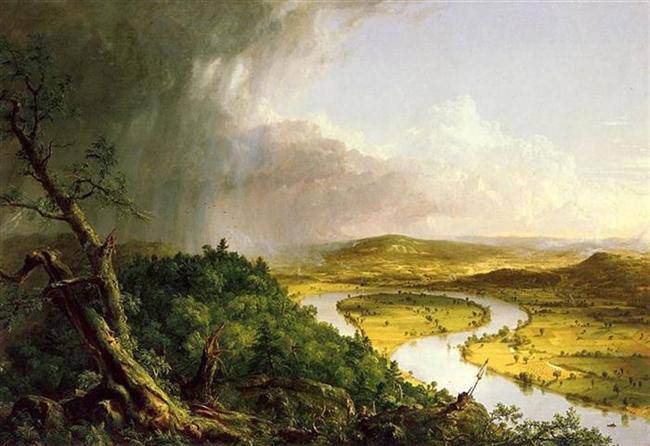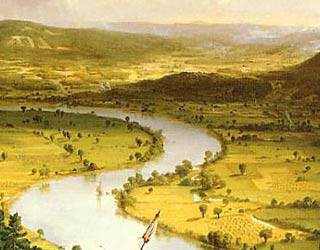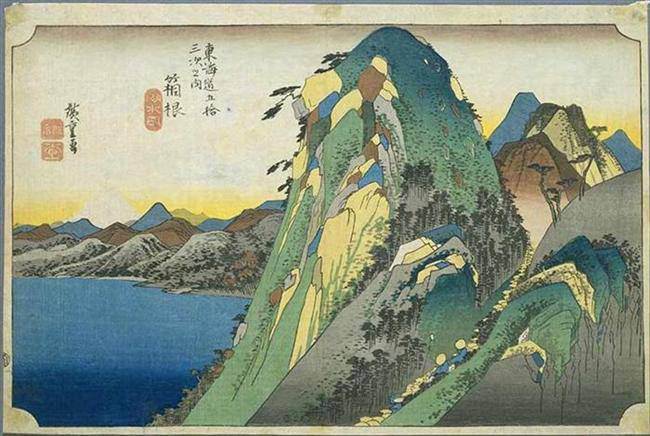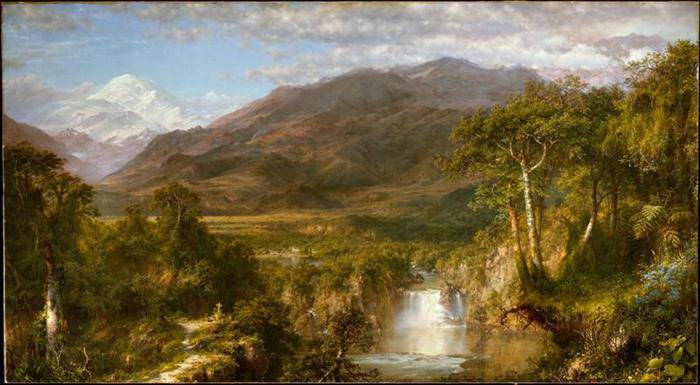Thomas Cole · The Oxbow

The Oxbow also known as “View from Mount Holyoke, Northampton, Massachusetts, after a Thunderstorm“
Thomas Cole (England / United States, 1801-1848), 1836. Oil on canvas, 130,8 cm × 193 cm (51.5 in × 76 in). Metropolitan Museum, New York
Thomas Cole is often considered the founder of the Hudson River School, and therefore the “father” of American landscape painting. Born in England, he emigrated to Ohio with his family when he was 17, and after a brief and unsuccessful career as a portraitist he began to show interest in the landscape of his adopted country, especially that of the Hudson River. Cole’s works inspired many famous American landscape painters of the following decades, such as Asher Brown Durand or Frederic Edwin Church.
In the mid 1830’s, Thomas Cole was given the important commission of painting ” The Course of Empire”, a large series of five canvases for his patron Luman Reed. The second work in the series, “Pastoral State” or “Arcadian State”, was enthusiastically received by Reed, who encouraged Cole to create a second version of the painting, but based on real landscapes known by the artist. Thomas Cole agreed, and told Reed that he had already commenced a view from Mt. Holyoke, the finest scene he had in his sketchbook.
The painting places the viewer on a high point of Mount Holyoke, enjoying a panoramic view of “The Oxbow”, an extension of the Connecticut River. The left side of the composition shows the mountainside, with its wild vegetation under threatening storm clouds. The right side of the painting shows the cultivated land on the banks of the river, a peaceful American Arcadia where man and nature coexist in harmony. The artist has depicted himself painting the scene, sitting quietly on a rock.
G. Fernández – theartwolf.com

Detail of the riverscape.
Follow us on:


